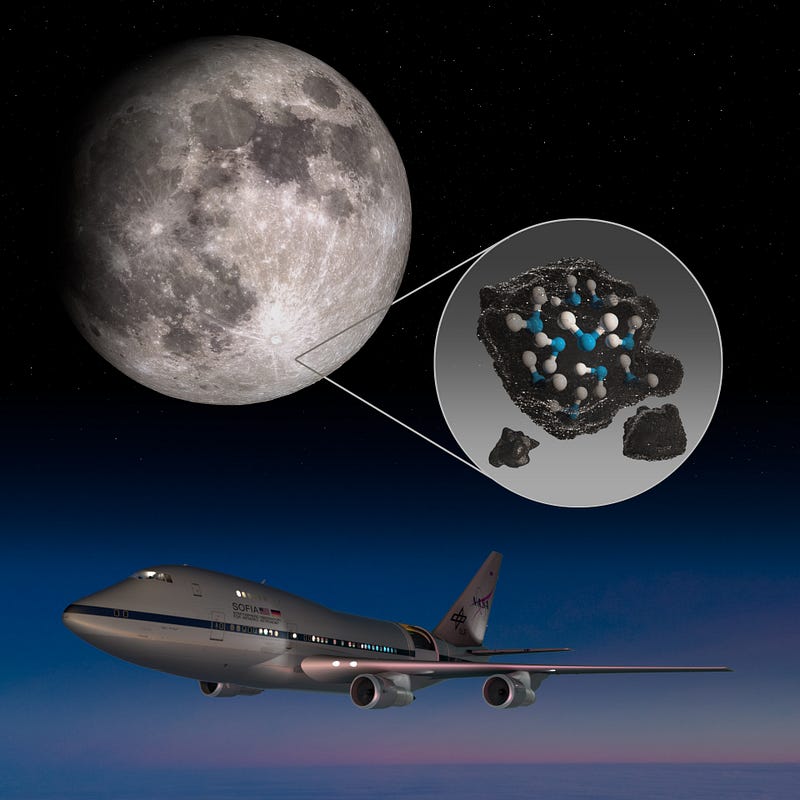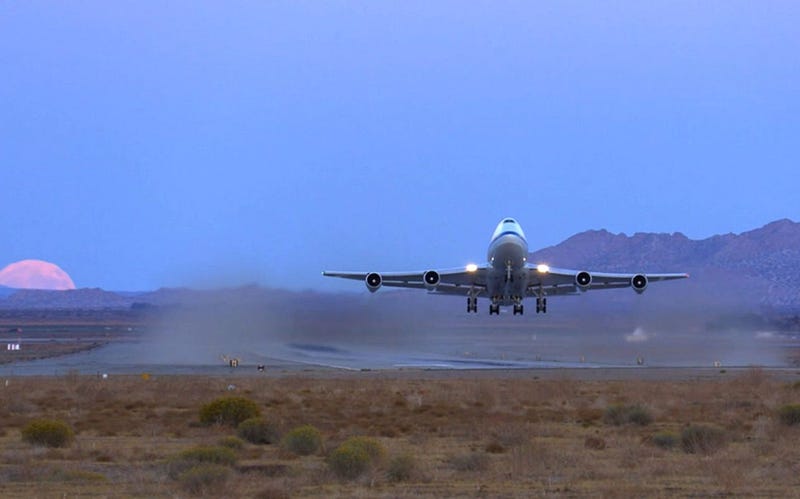Exploring Lunar Water: New Discoveries Beyond the Shadows
Written on
Chapter 1: The Significance of Lunar Water
Recent studies have unveiled that water is not just lurking in the Moon's dark craters; it's also been discovered on the illuminated surface. This groundbreaking finding has significant implications for future space missions.

The above illustration showcases the Clavius Crater, emphasizing the presence of water trapped within the lunar soil. It also features NASA's Stratospheric Observatory for Infrared Astronomy (SOFIA), which played a key role in detecting this sunlit lunar water.
Water is crucial for exploring our Solar System and poses one of the biggest challenges for potential colonization of extraterrestrial bodies. The discovery of water ice hidden in the shaded areas of craters presents new opportunities for astronauts venturing beyond Earth. However, retrieving this water from deep, hazardous craters remains a formidable challenge.
Notably, water has recently been identified in Clavius Crater, one of the largest craters in the Moon’s southern hemisphere, which is easily observable from Earth. This discovery raises the possibility that similar water deposits might exist across the lunar landscape.
Previously, researchers had spotted signs of water on the sunlit portions of the Moon, but the evidence was inconclusive. The presence of hydroxyl—an ion made up of one hydrogen atom and one oxygen atom—could have explained the signals detected by scientists.
Rising Above the Din

SOFIA, the Stratospheric Observatory for Infrared Astronomy, is a specially modified Boeing 747SP that enables researchers to deploy an infrared telescope above most of the Earth's moisture-laden atmosphere.
Utilizing the Faint Object infraRed CAmera for the SOFIA Telescope (FORCAST), scientists examined the Moon using infrared light focused at a wavelength of 6.1 microns. This wavelength is associated with water molecules, allowing researchers to distinguish them from hydroxyl, thereby confirming the presence of water.
In a recent publication in Nature Astronomy, researchers noted, “We observed a region at high southern latitudes near Clavius Crater and a low-latitude area of Mare Serenitatis. Data from SOFIA reveal a strong 6-micron emission band at Clavius Crater and the adjacent terrain.”
The Earth’s atmosphere at this wavelength is relatively calm, facilitating observations from SOFIA. Casey Honniball of the University of Hawaii at M?noa remarked, “Before SOFIA's observations, we were aware of some hydration, but we couldn’t confirm how much was actually water—like we drink every day—or something more akin to drain cleaner.”
Water You Doing There?
The origins of water on the Moon remain a subject of intrigue. One theory posits that micrometeorites may have delivered water to the lunar surface. Alternatively, hydrogen from solar wind might react with oxygen on the Moon’s surface to form hydroxyl, which then converts into water upon impact with micrometeorites.
It’s speculated that this water might be trapped in glass beads or concealed between soil grains as ice. Overall, it appears that the lunar surface holds approximately 12 ounces of water for every cubic meter.
NASA is gearing up to send the first woman and the next man to the Moon in 2024. As human exploration of the Solar System progresses, ensuring a water supply for future colonists will be essential.
Further investigations of the Moon will be conducted using SOFIA and other tools to uncover how this water forms, migrates, and remains stable under the harsh conditions of the lunar surface.
James Maynard is the founder and publisher of The Cosmic Companion. A New England native turned desert dweller in Tucson, he resides with his wife, Nicole, and their cat, Max.
Did you enjoy this article? Join us at The Cosmic Companion Network for our podcast, weekly video series, informative newsletter, and news briefings on Amazon Alexa and more!
The first video showcases the discovery of water on the Moon, highlighting the potential for further lunar exploration and resource utilization.
The second video presents a lyrical interpretation of lunar themes, illustrating the Moon's cultural significance and its allure in human imagination.